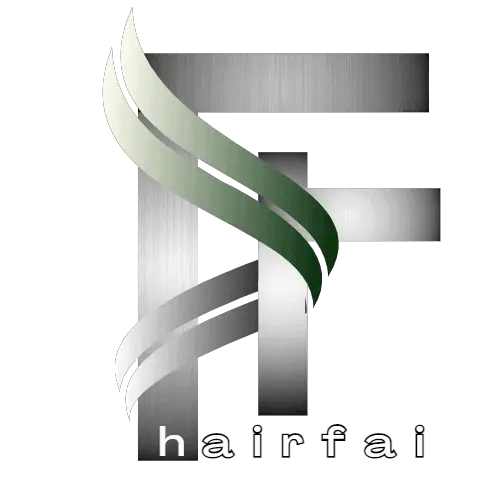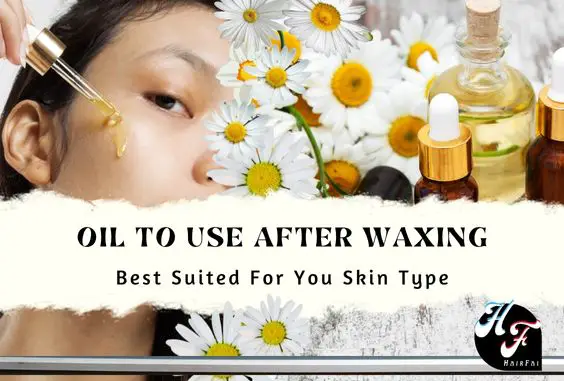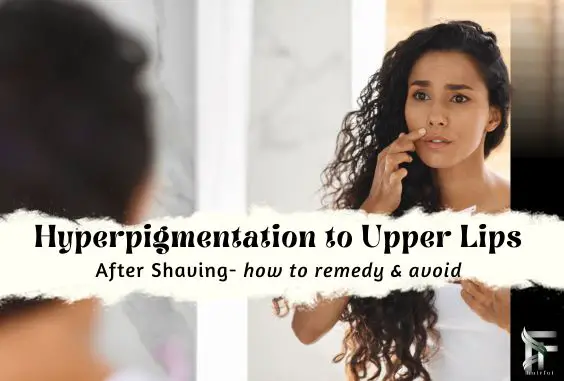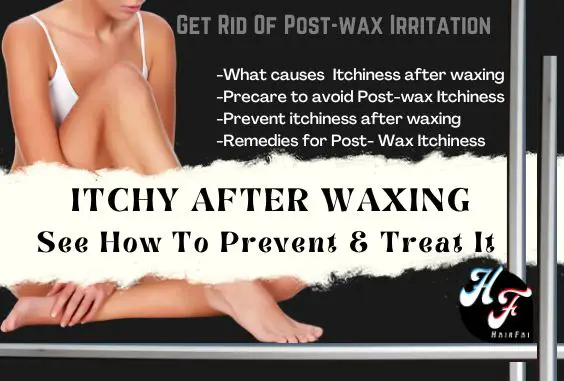Shaving Upper Lips- No Bumps, Ingrown hair & Pimples
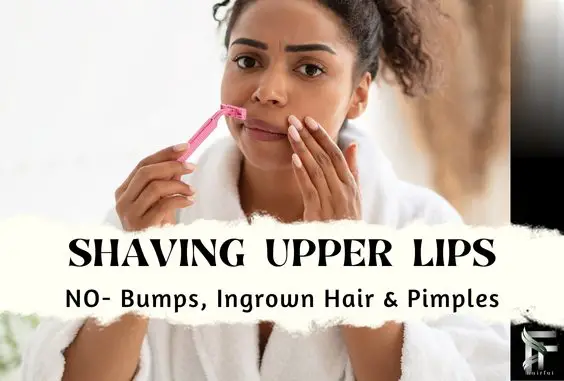
Shaving your upper lip is a great quick fix to getting rid of unwanted hair. But, it sometimes comes with some annoying aftereffects like; bumps, ingrown hairs, and pesky pimples.
Well, In this article, we will unveil the secrets to a flawlessly smooth upper lip, with no after and side effects to suffer.
We understand the causes behind these issues and have implemented tried and tested techniques. To help equip you with the necessary knowledge to achieve your desired results. We will discuss all the necessary tips, and tricks and share a step-by-step guide to hairless upper lips that is bump-free, ingrown hair-free, and pimple-free.
Is Shaving Good for Upper Lip
Shaving can be a convenient and effective method for removing unwanted hair from the upper lip. It offers quick and immediate results without any pain or discomfort when done properly. Shaving also helps exfoliate the skin, promoting a fresher and smoother appearance.
However, some individuals, like myself, may experience skin sensitivity or irritation after shaving the upper lips, so proper techniques and care are essential.
How to Shave Upper Lips Correctly
- Cleanse your face with a gentle cleanser and warm water.
- Gently exfoliate the upper lip area using a scrub or a soft washcloth.
- Apply a shaving cream or gel to the upper lip area.
- Take your sterilized razor and, using light pressure, shave in the direction of hair growth on your upper lip.
- Rinse the razor frequently to remove hair and shaving cream buildup.
- Once finished, rinse your face with cool water and pat it dry with a clean towel.
- Apply a gentle moisturizer to the upper lip area to keep the skin hydrated.
Video of How to Shave Upper Lips
Will my Upper Lip Hair Grow Thicker if I Shave it
No, shaving your upper lip hair will not cause it to grow back thicker. Shaving only removes the hair above the surface of the skin, leaving the hair follicle intact. The thickness and growth rate of hair is determined by genetics and hormones, not by the act of shaving.
How to Stop Bumps, Pimples & Ingrown Hair After Shaving Upper Lips
As someone who is very hairy, I can surely say we suffer the same fate. I have struggled with upper lip hair and always suffer the side effects that come with it. So here, I will share how you can stop or even reduce these aftereffects from happening.
1 – Ensure Proper Precare
Before shaving your upper lip, it’s essential to take proper pre care steps to ensure a smooth and irritation-free shaving experience. Here’s the step-by-step guide I use.
- Always cleanse your face to remove oil, dirt, and any impurities.
- Along with cleansing your can lightly exfoliate your upper lips
- Use a pre-shave wipe for an extra skin prep. (Optional)
- Apply shaving cream or gel over your upper lip area.
What you May Need
2 – Choose the right tool
When choosing a shaver blade to shave your upper lip, there are several factors to consider to minimize the risk of side effects and achieve a smooth, irritation-free shave:
- Opt for a shaver blade specifically designed for facial hair or sensitive areas like the upper lip. Single-blade razors are often gentler and cause less irritation than multi-blade razors.
- A sharp blade is a must, this ensures a clean cut and reduces the need for repeated passes, decreasing the chance of irritation.
- Ensure the blade is clean and free from debris and bacteria before each use. Unclean blades can lead to infections and skin problems.
- Look for shaver blades that have a lubricating strip with ingredients like aloe or vitamin E. This helps reduce friction and irritation during shaving.
- Look for shaver blades with skin defense guards, and small enough, to ensure a comfortable and precise shave.
- Some blades come with moisturizing strips that help hydrate the skin while shaving, reducing irritation and dryness.
- Choose a shaver blade explicitly designed for sensitive skin to minimize the risk of redness, razor burn, and itching.
- If you’re trying a new blade or technique, perform a patch test on a small area of your upper lip first to see how your skin reacts.
What you May Need
3 – Use Proper Shaving Technique Correctly
4 – Practice Proper aftercare
Here are some quick aftercare tips you need to consider after shaving your upper lips.
- Rinse with cool water.
- Pat dry gently with a clean tissue/ towel.
- Apply your favorite soothing gel.
- I would recommend that you also get a cream that is specifically formulated to prevent bumps, ingrown hair, and inflamed pores.
- Avoid touching the area to prevent any transmission of bacteria.
- Avoid sun exposure and use sunscreen if needed.
- Avoid harsh products and makeup for a few hours.
- Moisturize regularly with a gentle, alcohol-free moisturizer.
- Avoid exfoliating immediately after shaving.
- Don’t shave too frequently; allow hair to grow back.
- Clean your razor after each use.
- Use a clean towel and pillowcase.
I would recommend you get any cream/ointment that is specifically formulated to stop and prevent ingrown hair and pimples after shaving. Or you can see my picks below that are great for persons with sensitive skin and also combats post-hyperpigmentation.
Related Articles
Coconut Oil After Shaving – Benefits & How to Use Correctly
Waxing vs Shaving Face- Pros & Cons
Side Effects of Shaving Upper Lips
Shaving the upper lip, are indeed an effective and immediate solution to unwanted hair. However, by ignoring the necessary precare, aftercare, and correct procedure, you are risking certain side effects. Here are some potential side effects of shaving the upper lip:
- Shaving can cause temporary skin irritation, including redness, itching, and sensitivity. This is often a result of the razor blade irritating the skin or improper technique.
- Razor burns are a mild rash or irritation that can develop after shaving. It may cause redness, small bumps, and a stinging or burning sensation on the skin.
- Lead to ingrown hairs, especially if the hair is cut too short or grows back unevenly. Ingrown hairs occur when the hair curls back and grows into the skin, causing redness, inflammation, and potentially small, painful bumps.
- Accidental cuts or nicks can occur while shaving, particularly if you’re not using a sharp razor or if you’re rushing through the process. These wounds are usually minor, but they can cause temporary discomfort and may even lead to infection if not properly cleaned and treated.
- Shaving can temporarily strip the skin of its natural oils, leading to the skin becoming dry or flaky. It’s important to moisturize your upper lips after shaving to restore the skin’s hydration.
- Bacteria/Fungi can seep into open wounds caused by the shaving blade if aftercare is completely ignored. Putting you at the risk of an infection.
Is Shaving Better Than Waxing the Upper Lips
Waxing is indeed more effective than shaving unwanted hair from our upper lips, as it removes hair from the root, leading to longer-lasting results. However, it can be a bit more painful and expensive.
Whereas, shaving is a quick and easy option but only removes hair from the surface, leading to faster regrowth and potential skin irritation.
It ultimately depends on personal preference and skin sensitivity, so choose the method that works best for you.
Threading Vs Shaving- Which is Better for Upper Lips
I personally prefer the threading method over shaving my upper lips, as it is much more convenient for me. However, when it comes to choosing between threading and shaving for the upper lip, both methods have their pros and cons.
Here are some pointers on what to expect when threading and shaving unwanted hair from your upper lips.
Threading Upper Lips
- Threading allows for precise hair removal, making it suitable for removing fine, short hairs on the upper lip area.
- Compared to shaving, threading can provide longer-lasting results as it removes hair from the root. It typically takes longer for the hair to grow back after threading.
- Threading involves using a twisted thread to remove hair, minimizing the risk of cuts or bruises on the delicate upper lip skin.
- Threading is generally well-tolerated by sensitive skin as it does not involve the use of chemicals or sharp objects.
- Threading can be uncomfortable or slightly painful, especially for those who are new to the technique. However, the sensation tends to diminish with repeated sessions.
Shaving Upper Lips
- Shaving is a quick and easy method that can be done at home without any professional assistance.
- Shaving is a budget-friendly option as it does not require any specialized tools or regular salon visits.
- Shaving only removes hair at the surface level, so regrowth can be visible within a few days. It’s a temporary solution that requires more frequent maintenance.
- Shaving is generally painless, although some persons may experience mild irritation or razor burn, especially if not done properly.
- Shaving can cause minor cuts and bruises to the upper lip skin, which stands the risk of becoming infected if not properly taken care of.
Related Articles
Threading Upper lip Hair- Cost, Pros & Cons, How to DIY
Disadvantages & Benefits Of Threading Hair
Pimples & Bumps After Threading- How to Treat & Prevent
Best Eyebrow Threading Machine- Pros, Cons & How to Use
Does Eyebrow Threading Hurt- How To Prep & What To Expect
Is it Better to Pluck or Shave the Upper Lips
I personally prefer shaving rather than plucking each of my unwanted hair with a tweezer. And that is because it will be too time-consuming. However, choosing between these methods depends on your personal preference, the desired results, and individual factors (skin sensitivity). Here are some pointers to consider when deciding:
- Plucking removes hair from the root, resulting in slower regrowth compared to shaving.
- Plucking can help manage regrowth as the hair grows back gradually, and you can pluck individual hairs as they become visible. Unlike shaving where all hair is bounded to grow back.
- Unlike shaving which happens on the surface of the skin, Plucking pulls the entire hair from its pore and attached nerved. Which can be slightly uncomfortable or painful, particularly for individuals with sensitive skin or those plucking coarse hairs.
- Plucking tends to be more time-consuming than shaving, especially if you have very hairy upper lips.
- Choosing the wrong tweezers can potentially cause hair breakage or cut the hair, rather than a full removal.
Related Articles
Sugar Waxing Face & Upper Lips- How to DIY, Pros & Cons
Learn More On What to do After Underarm Waxing- Full Guide
Click here to see Why it is better to Wax Your Underarms
Folliculitis After Laser Hair Removal -Treated & Explained
Coconut Oil After Shaving – Benefits & How to Use Correctly
Deodorant After Laser Hair Removal – Potential Dangers and Risks
Deodorant After Waxing – Possible Dangers
What to Do After Waxing Underarms- Aftercare Guide & Tips
Benefits & Disadvantages of Waxing Underarm Vs Other Methods
What to know before Threading -Disadvantages & Benefits Of Threading Hair
